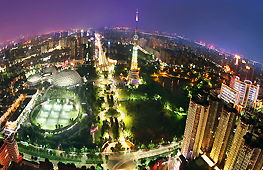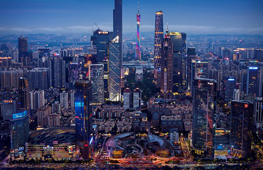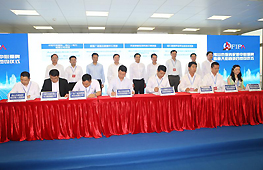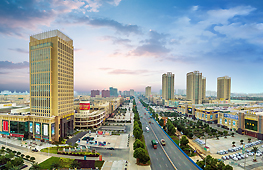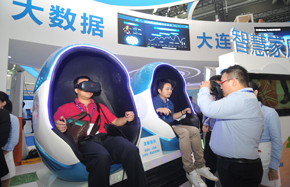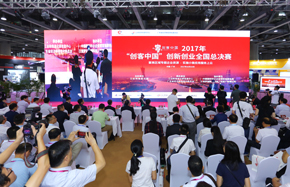Milan expo visitors get a taste of Chengdu
Editor's note:
Hi, I'm panda Rong Rong, from Chengdu, an exceptionally large city in Southwest China. As you know, I'm a cute chubby panda and like eating and playing. But you may not know that I'm also a fashion panda. I recently held a catwalk show at Expo Milano 2015, showcasing the best of my hometown, including the delicious spicy food, Sichuan Opera and Shu brocade. I also introduced visitors to my charming and fast-developing hometown.
—— Rong Rong
For visitors to China, Chengdu, the capital of Sichuan province, has long been a must-go destination. After the city's week-long appearance at the Expo Milano 2015 in July, it is likely to have even more fans.
At the expo, visitors watched Chengdu's promotional video, which showcased cute pandas, delicious hotpot and the city's rich cultural and historical traditions.
Upstairs the video became reality as visitors could try authentic Chengdu food, enjoy local performances and paint pictures of pandas.
Hotpot is probably the most popular dish associated with Chengdu. As the birthplace of Sichuan cuisine, one of four major Chinese styles of cooking, it has a lot of dishes to offer.
One of German chancellor Angela Merkel's favorite Sichuan dishes is Kungpao chicken, which she learnt how to cook when she visited the city in 2014.
The United Nations Educational, Scientific and Cultural Organization named Chengdu a "City of Gastronomy" in 2010, making it the first city in Asia to be awarded the accolade.
Local Sichuan Opera also has fans across the world. As one of China's oldest operas, it features intricate masks, swordplay, fire breathing and face-changing that impresses both Chinese and overseas audiences.
Yu Jia, an actress from Chengdu Opera Art Research Institute, said as increasing numbers of overseas visitors go to see the opera, they receive more offers to perform abroad.
"I have just been to Japan, Egypt, France and the US, and the audiences there showed possibly even more enthusiasm than those at home," she said.
The delicately woven embroidery, Shu brocade, has long won international praise and is another legacy of the rich Chengdu culture.
"People in the Roman Empire used silk from Chengdu. Chengdu's brocade was popular in Japan during the Tang Dynasty (AD 618-907)," said Wang Yi, curator of the Chengdu Museum.
Sheme, a local shoe brand that combines traditional Chinese elements and Western fashion, is restoring Shu brocade's popularity.
Late in 2013, Sheme, headquartered in Chengdu, debuted its "Butterfly and Blossoms" collection at London Fashion Week, becoming the first Chinese footwear brand to make it to the renowned event.
Now it also has stores in Beijing, Shanghai and is planning to make inroads to London, Paris, Milan and Hong Kong.
Named as one of the 52 places to go in 2015 by the New York Times, Chengdu's popularity is also rooted in its large number of places of interest.
The city's Jinsha Ruins have been hailed as a significant archaeological discovery as they show a thriving culture existed in Chengdu more than 3,000 years ago.
The Dujiangyan Irrigation Project, known as one of the major water conservancy projects during the Warring States Period (475-221 BC), was designed and built by Li Bing, a major official in the region in about 256 BC. The project is still functioning today.
Qingcheng Mountain, 20 kilometers from Dujiangyan, is the birthplace of Chinese Taoism. Many Taoist temples still stand on the mountain.
Chengdu received 1.97 million overseas visitors last year, a rise of almost 12 percent from the previous year, and the local tourism bureau said the city would continue to upgrade tourism facilities and services to meet local, domestic and international demand.
Chengdu has also been at the forefront of West China reforms and opening up.
The city's GDP passed 1 trillion yuan ($160 billion) in 2014, 8.9 percent higher than in 2013. The local statistics bureau said foreign investment in the city hit $10 billion last year.
As an exceptionally large city in Southwest China, it is located at the intersection of the Silk Road Economic Belt and the Yangtze River Economic Belt.
The Belt and Road initiatives is expected to reach 4.4 billion people, 63 percent, or almost two-thirds of the world's population, with a collective GDP of $21 trillion, or 29 percent of the world's GDP.
Since the launch of the Chengdu-Europe express railway in April 2013, commodities worth $580 million have been exported from Chengdu to Europe.
The line is an artery for economic exchanges between the continents of Asia and Europe and influences the development of China's western region, Europe and Russia.
"Since the opening of the Chengdu-Europe Express Rail Service, wide-ranging mutual cooperation between the two countries at both ends of the railway has greatly increased," said Katarzyna Kacperczyk, Poland's deputy foreign minister.
Chengdu is the fourth city where Poland offers consular services in China, following Shanghai, Guangzhou in Guangdong province and Hong Kong.
It was also the first city in western China to adopt the 72-hour visa-free policy, which allows passengers from 51 countries to spend three days in the city if they have valid third-country visas and flight tickets to onward destinations.
Big numbers:
1.97 million overseas visitors visited Chengdu in 2014, a rise of almost 12 percent from the previous year
1 trillion yuan Chengdu's GDP in 2014, 8.9 percent higher than in 2013
$10 billion foreign investment in the city in last year
265 Fortune Global 500 companies have a presence in the city






